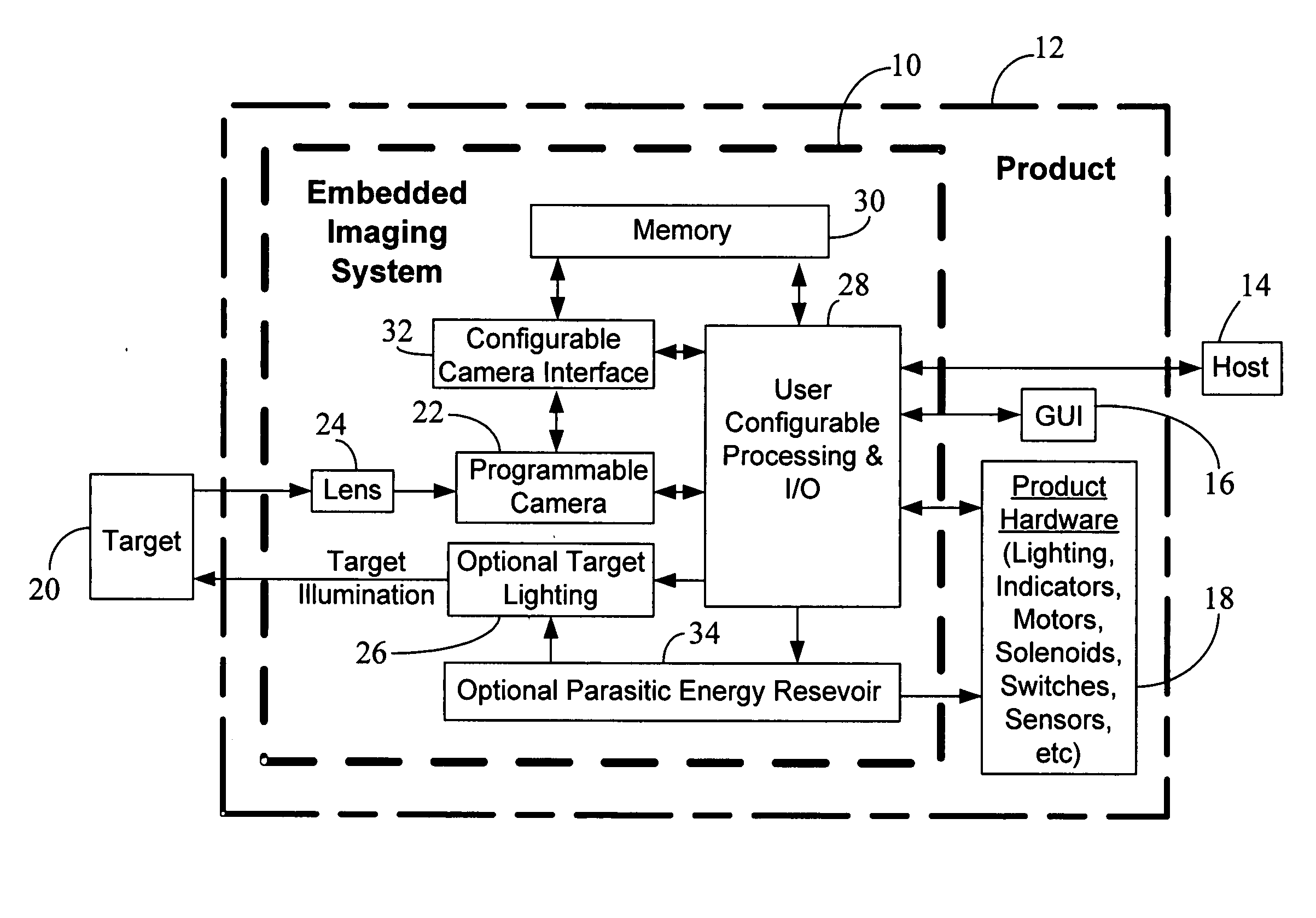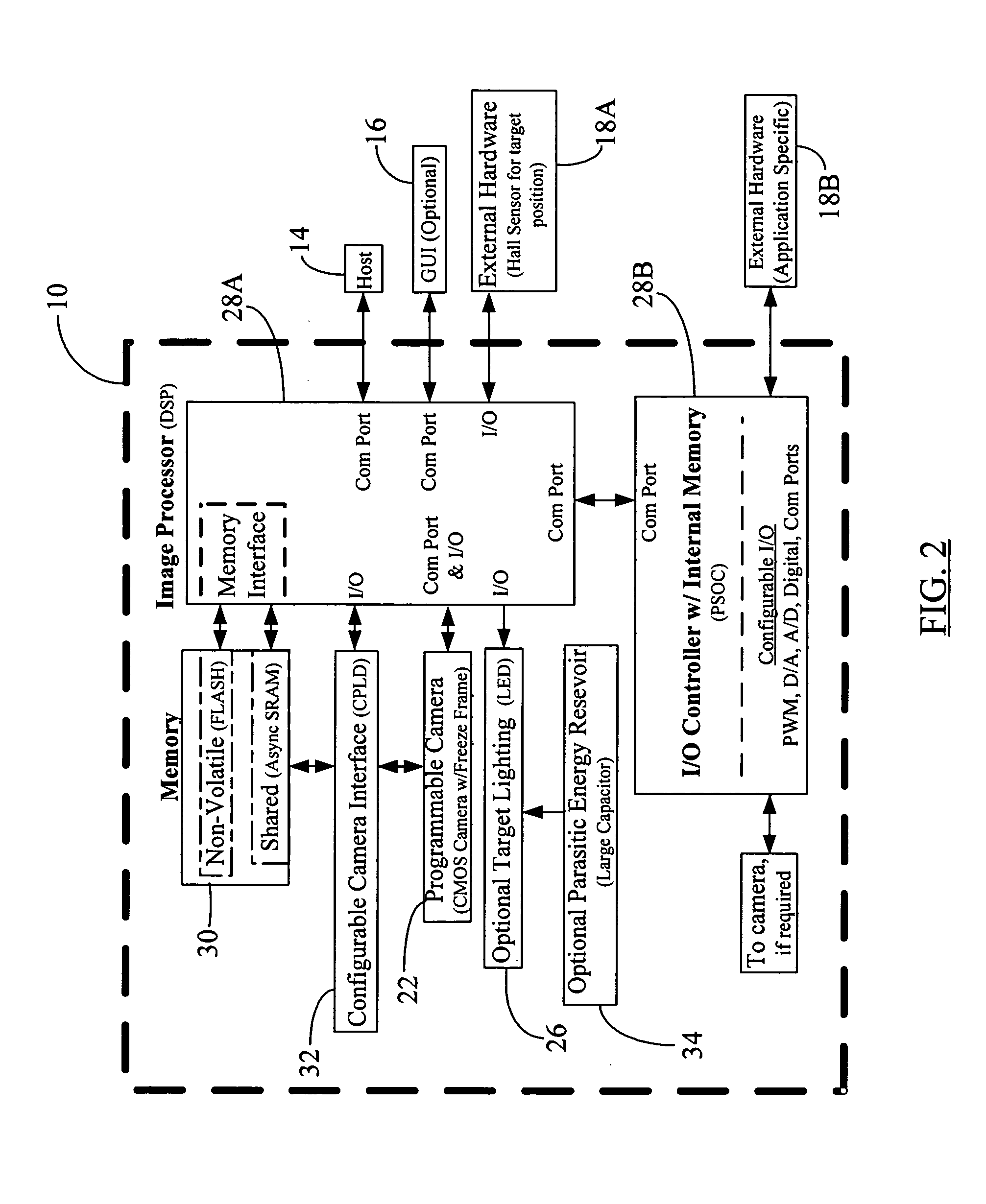Embedded imaging and control system
a control system and imaging technology, applied in the field of imaging systems, can solve the problems of large system size, high cost of all these systems, and inability to use in embedded applications, and achieve the effect of convenient fi
- Summary
- Abstract
- Description
- Claims
- Application Information
AI Technical Summary
Benefits of technology
Problems solved by technology
Method used
Image
Examples
Embodiment Construction
[0031] Reference will now be made in detail to certain embodiments of the present disclosure, examples of which are illustrated in the accompanying figures. It is to be understood that the figures and descriptions of the present disclosure included herein illustrate and describe elements that are of particular relevance to the present disclosure, while eliminating, for the sake of clarity, other elements found in typical imaging systems. It is noted at the outset that the terms “connected”, “coupled,”“connecting,”“electrically connected,” etc., are used interchangeably herein to generally refer to the condition of being electrically connected or coupled.
[0032]FIG. 1 shows a high level block diagram of an exemplary embodiment of an embedded sensor or imaging system 10 according to the present disclosure. The imaging system 10 is shown embedded in a typical generic product or unit 12. In this embodiment, the system 10 is doing more than taking images and handling image processing as ...
PUM
 Login to View More
Login to View More Abstract
Description
Claims
Application Information
 Login to View More
Login to View More - R&D
- Intellectual Property
- Life Sciences
- Materials
- Tech Scout
- Unparalleled Data Quality
- Higher Quality Content
- 60% Fewer Hallucinations
Browse by: Latest US Patents, China's latest patents, Technical Efficacy Thesaurus, Application Domain, Technology Topic, Popular Technical Reports.
© 2025 PatSnap. All rights reserved.Legal|Privacy policy|Modern Slavery Act Transparency Statement|Sitemap|About US| Contact US: help@patsnap.com



